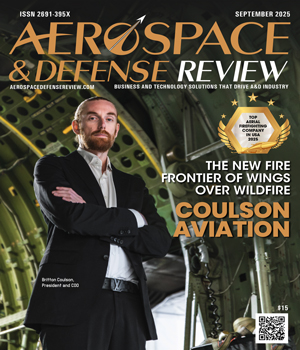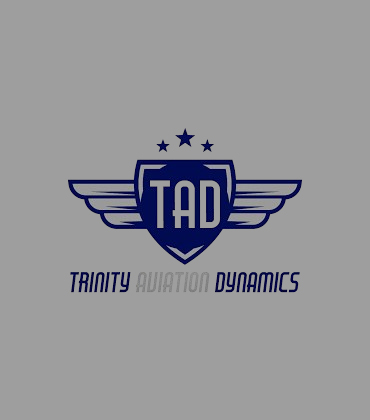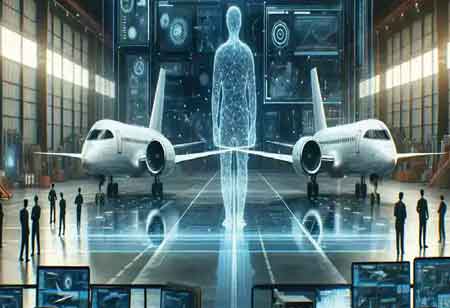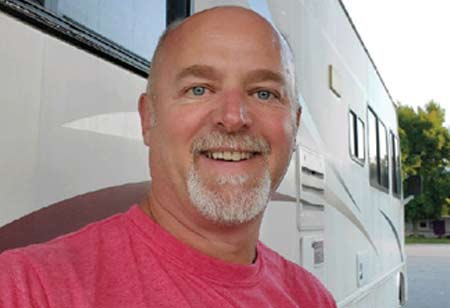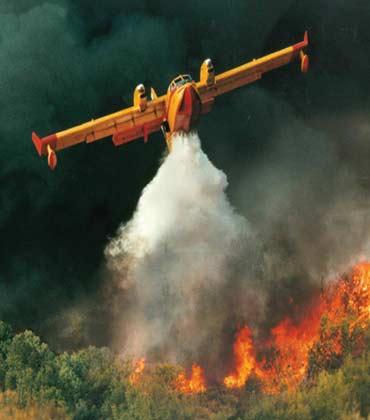THANK YOU FOR SUBSCRIBING
Every wildfire begins with a spark, but how quickly that spark becomes a disaster depends largely on the first response. In remote or rugged terrain, ground crews may take hours to reach the front lines. That’s where aerial firefighting shines. Within minutes, aircraft can be deployed to assess, contain, and suppress a growing blaze before it spirals out of control. In this high-stakes world of aerial firefighting, speed and precision can mean the difference between containment and catastrophe. The global industry leader that stands out with consistent clarity is Coulson Aviation. Coulson Aviation is a unique embodiment of family-driven innovation, vertically integrated excellence, and an unwavering commitment to public safety and environmental stewardship. By many accounts, Coulson Aviation is the largest aerial firefighting company in the world. But sheer size alone does not define its value or character. What truly distinguishes the company is its singular capacity to provide end-to-end solutions across all aspects of aerial firefighting—from engineering and aircraft conversion to active deployment and mission coordination. “We are among the last of our kind: a passionate, resultsdriven aerial firefighting enterprise that remains proudly family-owned,” says Britton Coulson, the company’s president and COO. From Timber to Tankers The story of Coulson Aviation begins long before it fought its first fire. The company’s roots trace back to 1960, when Coulson’s grandfather returned from World War II and purchased a bulldozer and logging truck to start a timber harvesting business. Based on the rugged and densely forested West Coast, the Coulsons thrived in the logging industry for decades. But by the 1980s, they saw an opportunity to innovate—and they took it. As traditional logging methods became less feasible in the Pacific Northwest, the company pioneered helicopter logging, adopting large aircraft like the Sikorsky S-61 to access previously unreachable, high-value timber. At the peak of operations, the Coulson Aviation fleet flew an astonishing 10,000 hours per year across four S-61 helicopters. Recognition came not just from the industry but also from original equipment manufacturers like Sikorsky and GE, who honored Coulson with multiple utilization awards. Yet even then, the seeds of transformation were being planted. During the hot and dry summer months, helicopter logging was often suspended due to fire risk—a regulatory safeguard rooted in weather conditions. Rather than remain idle, the company began to pivot. It started deploying aircraft for aerial firefighting missions during those periods of enforced downtime. What began as a seasonal operation gradually evolved into a full-fledged business model.
Top Aviation MRO Service 2025
When a helicopter lifts off, the crew on board; it carries the trust of everyone depending on that mission. Earning that trust is what we do best by outfitting aircrafts that are ready to serve, save, and soar,” says Logan Scherb, owner of TAD. This trust was built through the company’s persistence, smart decisions, and a relentless drive to overcome systemic industry barriers in aviation, standing today on a foundation of long-term growth and success in the aviation services space. From day one, TAD has worked on helicopters, both rotor-wing and fixed-wing aircraft. In early 2025, TAD expanded by acquiring Waypoint Aviation Enterprises in Bridgeport, TX. Now, one location specializes in rotor wing services, while Bridgeport handles fixed wing maintenance, completions, and avionics under a Part 145 repair station. Together, these facilities ensure every aircraft TAD touches is mission-ready. Receiving the Part 145 certification became a turning point for TAD, opening doors to establish accounts with rotor wing manufacturers and building relationships with key avionics companies. Before this, installations were slow and costly, with premium prices for hard-to-find parts. Now, in just the last six months, TAD has secured dealership agreements with several major avionics companies, strengthening its ability to serve customers efficiently. Riding this wave of progress, TAD is expanding into rotor wing mission equipment installations with several contracts already signed. This move is a step toward entering the government sector. TAD is also applying its deep expertise in emergency medical services (EMS) to handle specialized installs and conversions, ensuring aircraft are ready for critical missions. Complementing these initiatives, TAD continues offering a full range of services, including avionics upgrades, annual inspections, and maintenance. It performs component overhaul and repair in-house, with the exception of engines, which are outsourced to trusted partners to assure quality and reliability. For customers purchasing aircraft, TAD helps them find the right one and transforms it to match their vision, managing everything from avionics installations, interior refurbishments, to partnering with select subcontractors for high-quality paint finishes.
Most Reliable Business Aviation Service 2025
Whether it is a single jet or an entire fleet, private aviation offers exceptional freedom without the typical constraints of commercial travel. While the flight experience is seamless for passengers, finding the right crew to provide that experience can be challenging for operators. Even for a small team of pilots, flight attendants and technicians, sourcing talent, verifying credentials and coordinating schedules can quickly become overwhelming. That’s where JetPro Pilots comes in, streamlining the complexity of aviation staffing with precision and care. Founded 16 years ago by three pilots who saw a need for better service for both clients and crew, it was built on five core principles—simplicity, integrity, strong work ethic, people-first relationships and industry-leading technology. This foundation enables JetPro to support clients and crew with clarity, confidence and consistency, no matter how complex the flight requirements. Serving more than 500 clients across the country, including private aircraft owners and Fortune 100 companies, JetPro supports every type of operation with tailored crewing solutions. Through its nationwide network of over 3,000 vetted pilots, flight attendants and technicians, backed by 6,000+ pilot type ratings and more than 11 million flight hours—JetPro provides the depth, flexibility and readiness clients need to keep flying without compromise. “We don’t just staff aircraft. We simplify the entire process, making it seamless and stress-free for both crew and clients,” says Jason Wardwell, Chief Operating Officer & Partner. Streamlining Staffing with Technology JetPro’s proprietary apps, TripTrac and CrewTrac, serve as the digital backbone of its operations. These apps replace traditional paperwork with intuitive digital workflows for timesheets, expense reports and billing. TripTrac allows crew members to log workdays and upload receipts directly from their phones. With no markup on expenses, costs are billed transparently to clients. JetPro’s crew members are compensated promptly for the expenses they incur during a trip, often receiving reimbursement before their credit card statements are due. This quick turnaround supports smooth cash flow for crew and reduces financial stress, while also minimizing administrative burden for clients.
Business Aviation Scheduling Services of the Year 2025
When it comes to business aviation, precision is non-negotiable and margins for error are razor-thin. In such a scenario, you need a partner who helps every mission to take off without any disruption. Enter LD Aviation, that trusted ally behind the scenes who keeps everything running flawlessly while passengers board, pilots prep, and operators execute flight plans with precision. Founded by Lindsay Dyer, LD Aviation is more than just a scheduling and dispatch vendor. They are a strategic partner that offers full-spectrum operational support to private and corporate flight departments. From charter operations and Part 91 flight departments to international corporate fleets, the team delivers proactive, hands on solutions tailored to the unique rhythm of each client’s operation. “I like to think of us as the power behind the wings,” says Dyer, Founder and President. “When we do our job well, no one sees us. That’s by design.” A True Operational Partner Weather disruptions, customs complexities, fatigue compliance, last-minute reroutes can quickly derail operations in the aviation space. LD Aviation stands out for its ability to provide stability, responsiveness, and 24/7 support. The company centralizes scheduling, dispatch, accounting, international handling, and aviation-specific financial services under one roof, providing measurable cost savings and freeing up internal teams to focus on what they do best. Unlike traditional vendors or in-house solutions, LD Aviation’s model is designed for adaptability. Each client is assigned a dedicated point of contact who understands their operation inside and out. Whether a flight department needs round-the-clock support or just a few hours a week, LD Aviation scales effortlessly to match the demand without any long-term contracts or HR headaches involved.
Most Reliable Aircraft Fueling Service 2025
When aircraft touch down in Guam, time is rarely on their side. Whether it is a military operation, a medevac flight, or a business jet on a technical stop, every moment counts. Guam may be remote, but its role in global aviation is anything but peripheral and no one embodies that reality more fully than Aviation Concepts. Since 2001, Aviation Concepts has grown beyond the role of a traditional Fixed Base Operator (FBO), establishing itself as a vital mission enabler in the Western Pacific region. Strategically located at the crossroads of Southeast Asia, Hawaii, and North America, the company delivers round-the-clock fueling and aviation ground services tailored for the world’s most demanding flight profiles. “Our location allows us to support aircraft on long-haul flights that require quick, efficient technical stops, whether for refueling, crew rest, or maintenance coordination,” says Yxel Espina, General Manager of Aviation Concepts. The Calm in Guam’s Operational Storm Guam’s remote location presents a range of logistical challenges that can escalate rapidly; including extended lead times for parts and fuel, cross-border regulatory complexities, narrow coordination windows, and frequently unpredictable flight schedules. These factors have the potential to disrupt even the most meticulously planned missions—unless supported by a partner with the foresight to anticipate and address such issues proactively. This is where Aviation Concepts steps in. Rather than react, the team anticipates. Around-the-clock availability, proactive communication across time zones, and commitment to execution allows it to provide seamless service even under intense operational pressure. Every Jet A-1 fueling is handled by certified professionals who are trained to meet the highest safety and efficiency standards. Whether it is a rapid-turn refuel or extended ground handling support, the tempo of service always matches the urgency of the mission.
CXO INSIGHTS
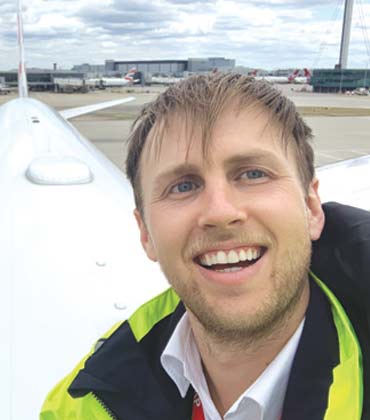
Unlocking the Future of Aircraft Maintenance with Technology
Andrew Ibsen, Duty Maintenance Manager, British Airways

Jetsetting Journeys: A Career Soaring from JFK to Unifi's Unique Aviation Landscape
Luigi Taliercio, Vice President of Operations, Unifi
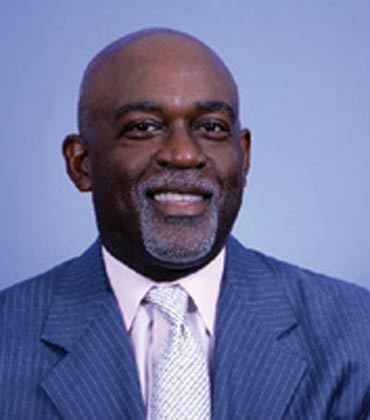
Modernizing Airports To Ensure Business Efficiency
Maurice Jenkins, Chief Innovation Officer, Miami International Airport
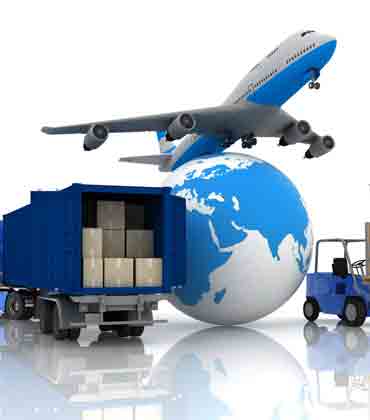
Transforming Aerospace Manufacturing with AI

Future-Proofing Airport Safety: Intersection of Innovation, Regulation and Leadership
Travis Krabbenhoft, Director of Airport Safety & SMS Manager, Denver International Airport

Strategic Solutions for Aircraft Maintenance Challenges
Nolan Elrod, Manager of Maintenance Contracts, Republic Airways

Strategic AOG Response: Elevating Airline Resilience in an Era of Disruption
Mark Finger, Manager - AOG Response, Delta Air Lines [NYSE: DAL]
IN FOCUS
EDITORIAL
Future of Aerospace Built on Modernization
The U.S. aerospace and defense industry is advancing through a pivotal period of modernization, powered by strong defense budgets, a commercial aviation rebound, and rapid digital adoption, reshaping operations from factory floors to frontline missions. Companies are investing in resilient supply chains, workforce upskilling, and embedding advanced technologies into design, production, and sustainment, delivering higher quality, greater reliability, and improved fleet availability. Aerial firefighting reflects this momentum. Longer fire seasons and increasingly complex incident demands are driving the expansion of fleets and the adoption of smarter operations. Enhanced sensors, better base coordination, and business aviation infrastructure enable faster turnarounds and broader coverage, securing aerial firefighting as a vital national capability. Maintenance, Repair, and Overhaul (MRO) services remain a growth engine for defense and commercial aviation. As operators extend aircraft lifecycles and address backlogs, U.S. MRO leaders are scaling with predictive analytics, IoT monitoring, and digitized records. Forecasts project steady expansion, underscoring MRO’s critical role in keeping fleets mission-ready. Quality assurance is another modernization pillar. Supply chain leaders are raising standards and tightening certification regimes to reduce variability and improve workmanship. By applying AQMS frameworks and advanced compliance systems, they drive higher reliability and accountability across every production tier. Business aviation proves indispensable, connecting communities, supporting emergency operations, and providing flexible logistics for government and industry. Its role in decentralized, rapid-response mobility exemplifies its enduring value as an economic driver and a foundation of national readiness. Scheduling and charter sales amplify this impact by streamlining access to aircraft and ensuring availability during peak demand. With precision scheduling and customer-focused innovation, these services set new benchmarks for reliability and efficiency. Fueling services complete the ecosystem. From business aviation hubs to firefighting bases, reliable fueling safeguards operational continuity, minimizes downtime, and enables the speed and reach vital to commercial and defense missions. Looking ahead, several forces will shape the landscape, including sustained defense investment in cyber, space, and unmanned systems. The industry’s response— supplier diversification, targeted M&A, and end-to-end digital transformation—is building a more agile, safe, and resilient ecosystem for the decade ahead. In this edition, we spotlight some of the most influential organizations and individuals driving these advances. Among them are Patrick Ryan, SVP and CTO at ABS, and Robert DeGrie, MS, Director of Technical Services (Aircraft Engineering) at Amerijet International. We hope that the valuable insights from industry leaders and the solutions and services featured in this edition will help you make informed decisions for your business.

However, if you would like to share the information in this article, you may use the link below:
https://www.aerospacedefenserevieweurope.com/edition/september-2025-42.html




